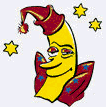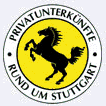
Overview of Stuttgart
No question – Stuttgart still has a grey image. This is said especially by those who have not yet had the South Western city on their itinerary, those who have not yet convinced themselves of what has been happening in the last 5 to 10 years. Stuttgart is still misjudged. For economy experts and culture aficionados, for insiders and friends of architecture on the other hand, »Schduagerd« has been on the hit list for a long timeWhile strolling down the Königstraße or touring through the pubs you will quickly recognise: Stuttgart does not fit into any frame. To find a clear cut face at first sight is not easy. A palladium of variety: successful industry next to extensive forest, meadow and winegrowing areas; sport centres; opera houses with international reputation; a large publication scene and South German Mecca for research. Despite all cosmopolitanism and city flair, on some corners there also is the dozy metropolis with its petit bourgeois narrowness.
Take your time to discover this variety – and sometimes also these opposites: Take a stroll by yourself far from the world through the Lapidarium with its stony witnesses of time or go through the museum temples with ten thousand others on the „Long Night of Museums“; laugh in front of the stage of the Swabian Dialect Theatre, or admire the prima ballerina of the ballet; travel into the past at the Württembergische Landesmuseum, or be provoked by Joseph Beuys in the Neue Staatsgalerie; wander through the vineyards surrounding the city, or follow the shopping hordes in the city centre at the weekend. Then you will get an idea what Stuttgart is made of.
Especially in the past years, Stuttgart with its almost 590 000 inhabitants has endeavoured to show its best features to the world and to market them. Self confidence is what the Swabians use. And the success speaks for itself. In 2002 alone statistics reported more than 2.1 million overnight stays by visitors from all over the world, as many as never before (1997: 1.67 million). Deciding factor for this new Stuttgart trend is certainly the musical boom which has brought many new guests to the city. That Stuttgart has steeply climbed the city popularity ladder is also owed to the innovative cultural scene.
Between the International Bachakademie, founded and managed by Professor Helmuth Rilling, and the Ludwigsburger Schlossfestspielen, Stuttgart has also seen the birth of German Hip Hop. Within a few years, the »Fantastischen Vier« were followed by further bands in the charts, since then you cannot go past Stuttgart if the subject is German rap. The “Hip Hop Open” as open air concert is bookmarked by tens of thousands beyond the borders of the region as a set date every year.
”What do we need art for, we need potatoes” was once a Swabian saying. But art lovers and culture managers, donors and stage talents prevailed – without celebrities and glamour but with ideas, enthusiasm and international team work. Additional cash boxes were opened and charitable foundations created in order to buy famous art treasures. The Stuttgart Ballet became world famous, the Staatsoper was voted Best Opera in the German speaking area four times in five years, the Schauspielhaus is seen as a talent factory for young directors. Furthermore the city disposes of one of the most multifaceted small theatre scenes in Germany. Political cabaret has also found its place here, just like boulevard amusement and the theatre of young authors.
Last but not least, the city has been given a modern tint through large events such as the Athletics World Championship in 1993 or the International Horticultural exhibition in the same year, even though it did not succeed with their application for Olympia 2012. Despite all innovation: Stuttgart has always stayed faithful to tradition and maybe this connection is the secret of the continuous success of the federal capital.
Exemplary for this is the publication scene which counts 130 publishing houses based in the centre and 250 in the region. Holtzbrinck, Klett, Motor-Presse and Mairs Geographischer Verlag are only the largest and most well known which populate the German and to some extend also the international newspaper and book market. Not to forget hat it was in Stuttgart where Mickey Maus and Donald Duck learned German in the Ehapa-Verlag, and it was from the Thienemann office in a side street of the city where Räuber Hotzenplotz, Jim Knopf and Lukas, the train driver, captured children’s bedrooms.
Tradition and innovation – the whole economic location Stuttgart is coined by it. Hardly any other region has been successful in laying down such a solid foundation for success. Surely it is no accident that worldwide well-known companies such as DaimlerChrysler, Porsche or Bosch, have their origin in Stuttgart.One of the recipes for success: In the previous years science and economy have strongly stepped up to one another. Stuttgart can show two universities, six academies and technical colleges, a row of non-university research facilities as well as nine scientific institutes.
But Stuttgart’s mixture of success combining classic industries, new dynamic growth sectors such as information and communication technologies, new media and environmental engineering is not always met with approval. Some accuse the city fathers of misjudgement in the race for international recognition especially regarding the large construction projects. Construction and concept of the Neue Galerie der Stadt (new gallery of the city) are heavily criticised. A “Trump Tower”, planned as the highest building in Southern Germany, was only erected in the imaginations of the architects, the conversion of the train station within the billion Euro project “Stuttgart 21” still only exists on the drawing table. The new and underground through station shall connect the city to the international long distance railway system from 2013.
Until now there is little to see of architectural sky-scraping in the cityscape: There are no glass high rises to heights such as in Frankfurt, no smoke rises from skinny chimneys above the city. A large part of the industry has settled, hardly visible, around Stuttgart, Porsche rolls of the conveyor belt in Zuffenhausen, DaimlerChrysler is enthroned in Möhringen in its fortress-like administration building. In many city districts, Stuttgart is and remains a sea of red roof tiles.
Many offices, many stages, much bustle – without larger damage for the environment. Stuttgart is known as the city in the Green. The Schlossgarten, the Bärensee or the forest around the Bopser invite for relaxation. The broad green expanse of the city is particularly noticeable from high above the roofs and the street canyons, from the Uhlandshöhe by the Observatory, on the Haigst in the South, from the Bismarckturm in the North or from the Karlshöhe in the West.
Besides the beauties in town such as the Neue Schloss or the Königsbau, which is currently being restyled as a modern department store, you cannot help but notice the concrete scars which were left especially after the war in the heavily destroyed Stuttgart, but also in the 1960s and 70s. The conversion of the Kleine Schlossplatz was also surrounded by controversy like the traffic heavy knot at the Charlottenplatz. There is not much left of the impressive beauty of historic Stuttgart, especially not in the centre. In the last few years, many well known architects such as James Stirling with his Staatsgalerie, used the surface area for bold constructions.
The idyllic location didn’t make it easy for the city on its way to the future. During the colonisation of Stuttgart, the spacial separation between highs and flood plains played a big role. Constricted between mountains and hills, open only towards the East and not at all at the river Neckar but instead at the Nesenbach, the Swabians could only poorly expand. “You just cannot look out of a cauldron” it was said.Centre of historic Stuttgart is the area around the Old Castle, where, on the swampy site in the middle of the 10th century stood a „Stutengarten“, a stud. The settlement received ist town charter in the 13th century, became the domicile of the Duke of Württemberg and the upturn to becoming official capital and residence city began. Golden and dreary times followed until the first half of the 19th century when the town rose to industrial city.
Right next to the comparatively small centre were classy terasses in the North around the Killesberg, just like the streets in the East were coined by working class flats. Especially the formerly independent small communities such as Bad Cannstadt, Wangen, Vaihingen und Weilimdorf which form a circle around the city have kept their selfconfidence. By now Stuttgart is divided into 23 districts, five inner and 18 outer ones. Every one is proud of their district, hardly any Stuttgarter is from Stuttgart itself.
The »Reing'schmeckten«, those having moved to Stuttgart from abroad, and foreigners have changed the image of the city and of the Swabians lastingly especially in the years after the war. "The doubtful, the queer, the critical and the practical in the being of a Stuttgarter
combined itself with generosity, the daringness, the urbanity and the affinity for taking a moment of many new citizens". This is how the writer Thaddeus Troll explained the new character.Since the 1960s, the industrial assembly lines brought many foreigners into the city: Italians and Portugese, Turks and Greeks, Serbs and Croats. People from almost 170 nations live here. Almost every fourth Stuttgarter is a foreigner, 100 different languages are spoken, partly their learned German has already taken on a Swabian tinge.
Stuttgart certainly isn’t a city which opens up and reveals itself easily. She shows her face, her charm and her advantages only to those who search with curiosity and without prejudice. You best start right now: Discover Stuttgart!





